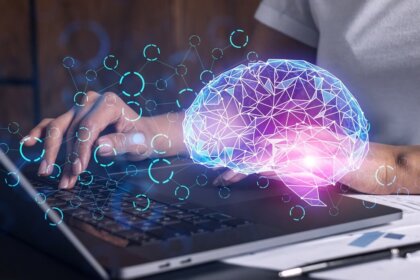
Natural Language Processing (NLP):
In the ever-evolving landscape of artificial intelligence, one branch stands out for its ability to bridge the gap between machines and human communication: Natural Language Processing (NLP). NLP is revolutionizing the way we interact with technology, from virtual assistants like Siri and chatbots to content recommendation engines and sentiment analysis tools. In this blog, we’ll explore the fascinating world of NLP and how it’s changing the way we harness the power of language in Machine Learning (ML).
The Essence of Natural Language Processing
At its core, NLP is a subfield of ML that focuses on enabling computers to understand, interpret, and generate human language in a valuable way. It seeks to make sense of the vast amount of unstructured text data that exists in the digital world. The ultimate goal? To bridge the gap between human communication and machine understanding.
Key Components of NLP
- Text Analysis: NLP algorithms break down text into its fundamental components, including words, phrases, and sentences. This allows machines to analyze and understand the structure and meaning of written language.
- Language Modeling: Language models are the heart of NLP. They are statistical models that predict the likelihood of a word or phrase based on its context within a sentence. These models help NLP systems understand the context of words and phrases.
- Named Entity Recognition: NLP can identify and classify entities within text, such as names of people, organizations, locations, dates, and more. This is invaluable for tasks like information extraction and content categorization.
- Sentiment Analysis: NLP can gauge the sentiment or emotional tone of a piece of text. This is crucial for businesses to understand customer opinions, reviews, and social media discussions.
Practical Applications of NLP
NLP’s capabilities have far-reaching implications across various industries and domains:
1. Virtual Assistants: NLP powers virtual assistants like Siri, Alexa, and Google Assistant, making it possible to have natural language conversations with our devices.
2. Chatbots: In customer service and support, chatbots use NLP to understand and respond to customer queries effectively, providing instant assistance and reducing response times.
3. Translation Services: NLP facilitates automatic language translation, making content accessible to global audiences and breaking down language barriers.
4. Healthcare: NLP assists in analyzing medical records, extracting patient information, and even diagnosing diseases based on textual data.
5. Finance: In the financial sector, NLP is used for sentiment analysis of news articles, stock price prediction, and fraud detection.
Challenges and Future Prospects
While NLP has made tremendous strides, it faces challenges such as handling ambiguity, overcoming language barriers, and addressing bias in training data. However, ongoing research and advancements in deep learning are continually pushing the boundaries of what NLP can achieve.
The future of NLP holds exciting prospects, including more accurate language understanding, improved multilingual capabilities, and enhanced human-machine interactions. As NLP continues to evolve, it will play an increasingly pivotal role in how we communicate with technology.
Natural Language Processing is not just a field within Machine Learning; it’s a gateway to more intuitive, human-like interactions with computers. Understanding the power of language in ML through NLP is not only fascinating but also transformative. As NLP technologies become more integrated into our daily lives, they will shape the way we interact with technology and the world around us, making it more accessible, efficient, and responsive than ever before.




